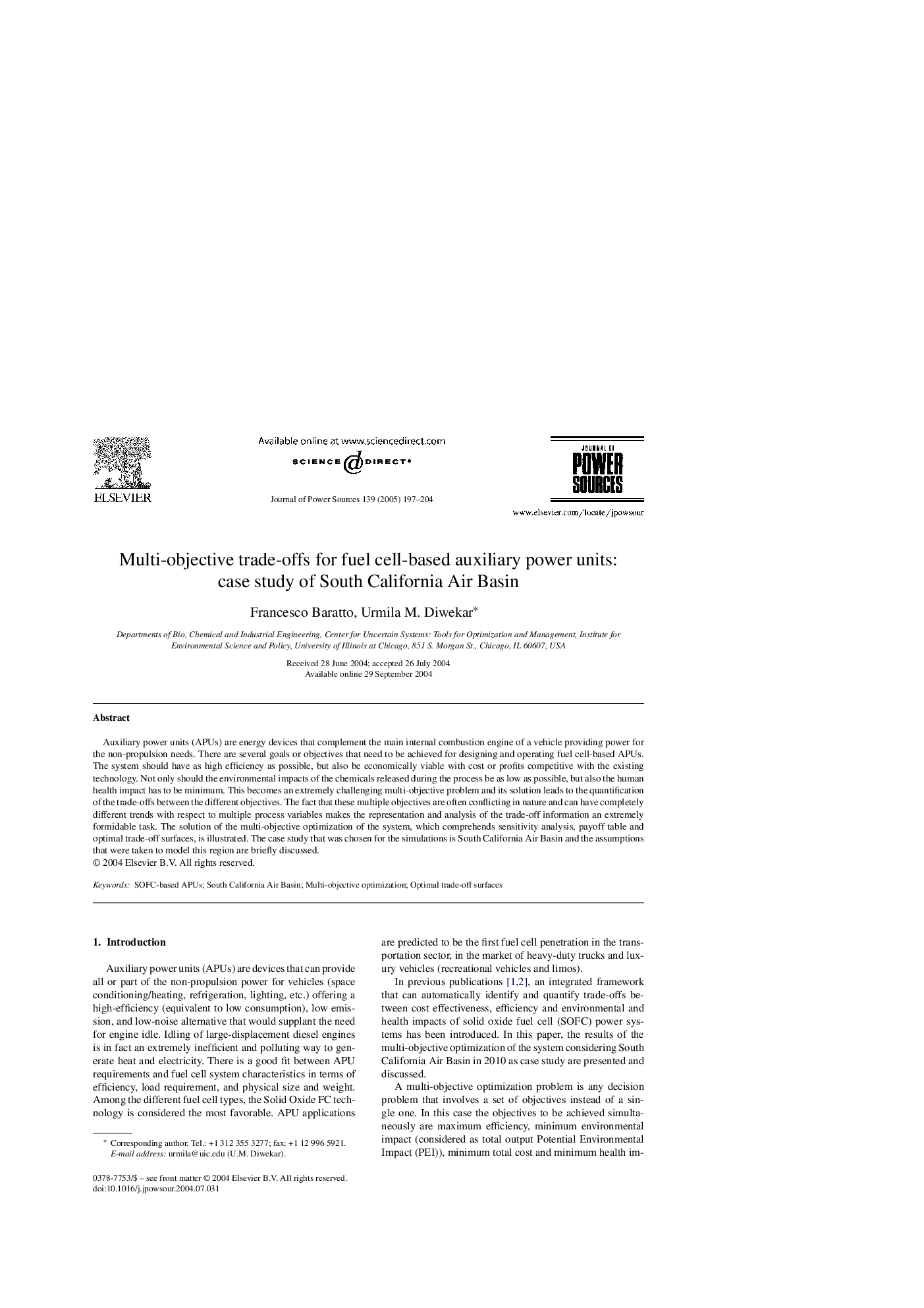| Article ID | Journal | Published Year | Pages | File Type |
|---|---|---|---|---|
| 9760515 | Journal of Power Sources | 2005 | 8 Pages |
Abstract
Auxiliary power units (APUs) are energy devices that complement the main internal combustion engine of a vehicle providing power for the non-propulsion needs. There are several goals or objectives that need to be achieved for designing and operating fuel cell-based APUs. The system should have as high efficiency as possible, but also be economically viable with cost or profits competitive with the existing technology. Not only should the environmental impacts of the chemicals released during the process be as low as possible, but also the human health impact has to be minimum. This becomes an extremely challenging multi-objective problem and its solution leads to the quantification of the trade-offs between the different objectives. The fact that these multiple objectives are often conflicting in nature and can have completely different trends with respect to multiple process variables makes the representation and analysis of the trade-off information an extremely formidable task. The solution of the multi-objective optimization of the system, which comprehends sensitivity analysis, payoff table and optimal trade-off surfaces, is illustrated. The case study that was chosen for the simulations is South California Air Basin and the assumptions that were taken to model this region are briefly discussed.
Keywords
Related Topics
Physical Sciences and Engineering
Chemistry
Electrochemistry
Authors
Francesco Baratto, Urmila M. Diwekar,
